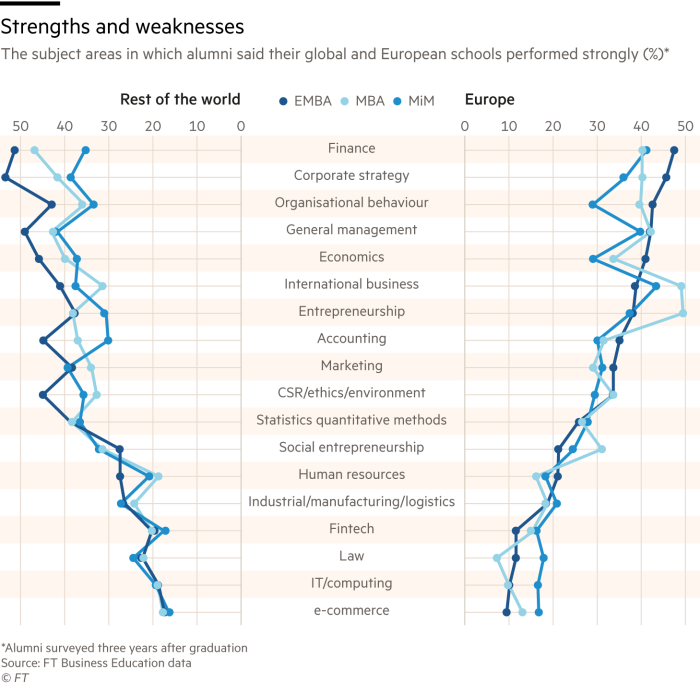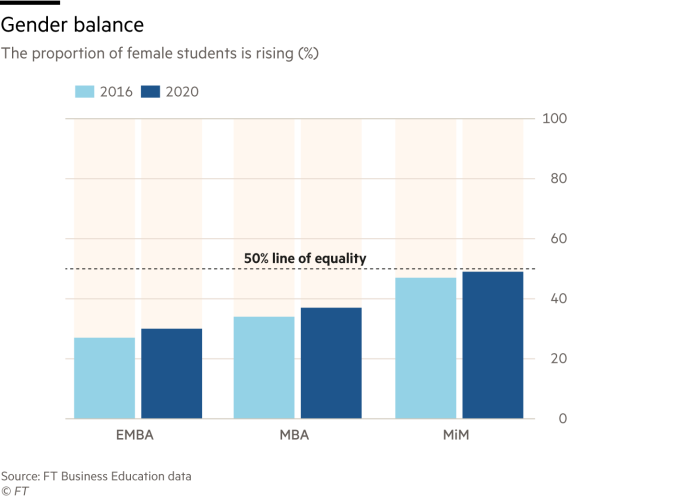Charting European business school graduates’ progress
The FT’s position team delved into the 2020 facts on matters ranging from vocation progress, alumni seniority and sectors of employment to gender balance, benefit for dollars and graduates’ views on what organization colleges do effectively — and a lot less effectively. We look at the figures for alumni from MBA, executive MBA (EMBA) and Masters in Management (MiM) programmes

Development involving graduation and 3 years later on. Most Masters in Management (MiM) college students have not labored beforehand.

Government MBA (EMBA) alumni are likely to be more senior right before their masters and are in more advanced positions 3 years after completing it.

MBA programme alumni are more very likely to operate in up-and-coming sectors these as ecommerce than their MiM and EMBA counterparts.

European university alumni report that MBAs are great for entrepreneurship and global organization, though the EMBA is more robust for corporate method and finance. MiMs rating hugely for common management, global organization and finance.

Masters in Management programmes at European organization colleges are likely to have more gender-well balanced cohorts. The range of woman college students finding out for an MBA, executive MBA or MiM has increased in modern years.

The range of years it would acquire alumni to spend off their charges if they ended up to use all of their income 3 years after graduation. European colleges are on average much better benefit for dollars than the rest of the globe, with Belgian alumni in a position to spend quickest.
Graphics by Chris Campbell








